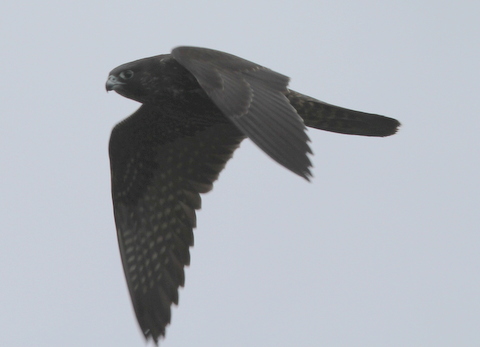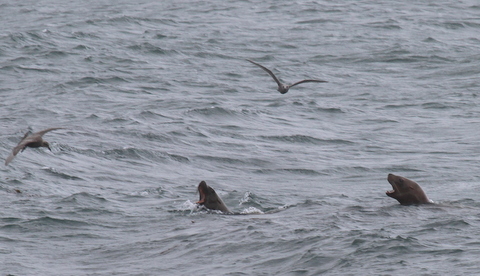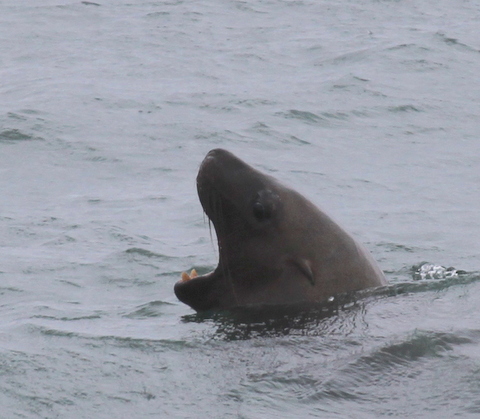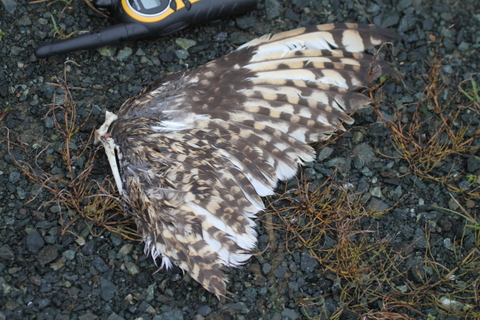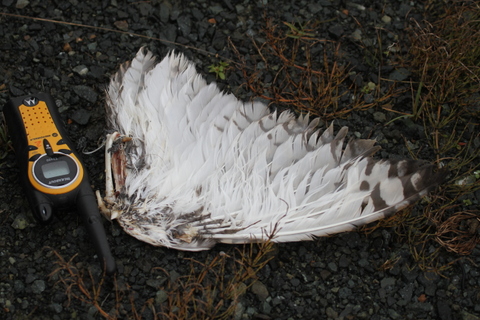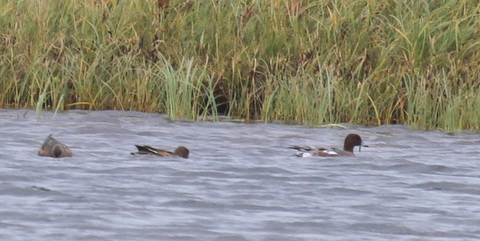Today was not very birdy, but had its interesting moments.
The weather was overcast with intermittent showers (more mittent than inter!). Therefore, I did not do too much hiking around.
Only a few things of note.
Up at Clam Lagoon, the number of Common Teal and Northern Pintails have increased. There were eleven Greater Scaup on Lake Shirley, the most that we have seen so far on this trip. A Peregrine Falcon circled us several times — I think it may have had a kill nearby from which we disturbed him.
As we drove north along the seawall, I got out to scan for shorebirds and seabirds. I noticed a commotion out in the water about a hundred yards ahead of where I was standing. There were two Stellar’s Sea Lions sticking their heads out of the water with their mouths wide open. Several gulls were hovering overhead. I took some pictures and then the Sea Lions dived. As I was watching for them to resurface, I suddenly heard a loud roar! The Sea Lions had resurfaced right out from where I was standing and were calling (ROARING!). That is how they got there name. We had never heard Sea Lions before, so this was very exciting. Note the external ears–that is how you tell a Sea Lion from a Seal.
We headed over towards the east side of Lake Andrew. As we were approaching the lake, Barb spotted some feathers on the road. I got out and picked up a wing. It appears to be that of a Short-eared Owl (If anyone reading this post can identify it as something else, please let us know). For size determination, the walkie-talkie next to the wing is nine inches long (to the tip of the antenna).
We have only seen one Short-eared Owl out here in all of our trips, so this is an interesting find. They have nested on Adak as recently as 2004-2005.
We continued over to the west side of Andrew Lake, and in one of the ponds, found three Eurasian Wigeon — the male had enough orange color to its head to distinguish it from American Wigeon. Most of the wigeon we have seen so far on this trip were in eclipse plumage and difficult to determine which species they are, but we were leaning towards Eurasian for most of them.
We did a quick look at Contractor’s Marsh, and as we pulled in, a shorebird flew overhead, circled and landed a hundred yards out in the marsh. It appeared dark-backed and did not have white spots on the sides of the tail as Pectorals and Sharp-tails do. As I walked out into the marsh to try to see it again, a Long-billed Dowitcher flew out nearby. This was a new bird for the trip. The mystery shorebird flushed again, but gave an even poorer look and disappeared farther out in the marsh. I walked a long section in the direction it flew, but we never saw it again.
Better luck tomorrow.

